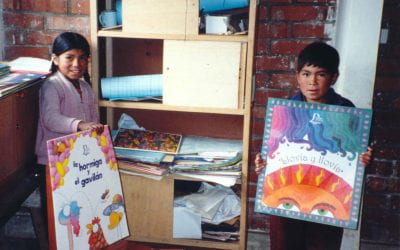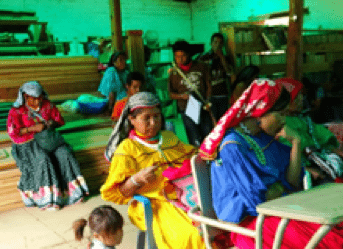On Being Bilingual: A look at Mexico’s Urban Schools
In urban classrooms throughout Mexico, migrant and resident indigenous students with a heritage of several indigenous languages sit side-by-side with children who speak only Spanish. Multicultural classrooms can include children from different ethnic groups such as Chontales, Totonacos, Triquis, Nahuas, Mazatecos and Tzeltales who blend in with their mestizo classmates. Their parents masked their fears by denying or minimizing their indigenous identity, and in general, their teachers are not aware of the significance of this diversity. They confront the indigenous presence in their classrooms by denying it, making it invisible or trying to manage it with scarce emotional and didactic resources.
In the last few decades, more and more indigenous children with a variety of native tongues are thrust into Mexico’s urban schools. Some 500,000 indigenous people are among the 8.8 million inhabitants of Mexico City, according to journalist Luis Brito, in his article on indigenous migration to Mexico City, citing federal government estimates (Sin Embargo, August 31, 2015).
What is notable is that despite the ambiguous and contradictory linguistic policy of the Mexican state—essential for understanding Mexican bilingualism—the existence of pro-bilingual laws does not alter daily life or the school curriculum, which paradoxically is only in Spanish (and increasingly including English.) Thus, bilingualism becomes devoid of significance, as a brief mosaic of testimonies of teachers, children and parents—the main actors in the educational process—will illustrate. Their attitudes and sentiments are eloquent and enable us to understand the fragile nature of bilingualism which undercuts their native languages bit by bit.
Bilingualism is a process, a mechanism, a result with many facets. Yet, many want to reduce it to a simplistic matter of speaking two languages. What’s for sure is that it’s hard to define because of its very complexity. Neuropsychologists focus on people’s capacity in the face of two linguistic systems with everything that implies, including structures, meanings, forms and functions.
Social factors also play a role and put into play conflict or consensus when speakers and languages come into contact. When the ideologies, cosmovisions and attitudes contained in two communication systems collide, bilingualism can shake the entire socio-emotional structure of speakers whose languages are strengthened or, on the other hand, put at serious risk of disappearing. So we need to ask ourselves about the difficult challenges education faces in dealing with these different linguistic systems and forms of understanding life itself.
I’m going to focus on those types of bilingualisms resulting from the contact between Spanish, the dominant language in Mexico, and a great number of indigenous languages that still persist throughout Mexico—68 language with 364 variants. This diversity takes place in a wide variety of situations, geographies and social contexts that cannot be compared with each other.
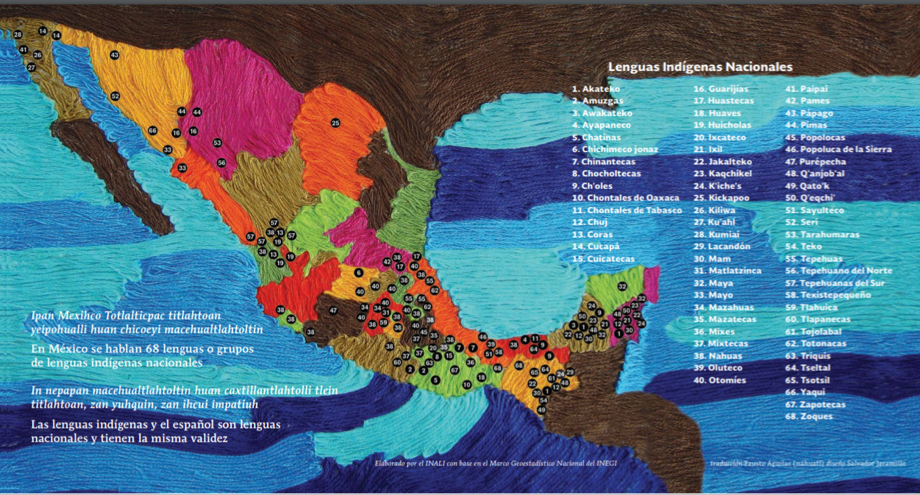
Schools can help us understand these complex experiences of bilingualism since they generate all sorts of expectations and human and academic experience, derived from their contact with the Spanish language.
Mexican Linguistic Policy: Contradictory and Unstable
The path of Mexican linguistic policies has been very tortuous throughout history. Long before the arrival of the Spanish, the hegemony of certain pre-Hispanic cultures imposed their language and culture on the groups they conquered. Shortly before Spanish colonization, the Nahua people had extended their control throughout Mesoamerica and Náhuatl was the supreme language. The arrival of the Spanish complicated the panorama drastically as their religious ideology permeated linguistic, cultural and educational activities. Two strong social values emerged: bilingualism and phonetic writing, both of which had huge impact on the indigenous people. Thus the present dilemna can be traced back to colonial times: teaching is in Spanish or in an indigenous language; education for indigenous peoples is reduced to daily oral communication or literacy is imposed in Spanish; either indigenous language or Spanish is prioritized. This constant swinging between different types of teaching weakened indigenous education. Since Independence and well into the 20th century, linguistic policy was a muddle of contradictions; with a pronounced nationalistic conviction and an accompanying erasure of indigenous languages to a surge of a bilingual intercultural policy that, although it reproduces once again some of the same contradictions, presents a somewhat hopeful discourse. The argument is that national unity must be achieved, but with attention to cultural and linguistic identity to strengthen local, regional and national identity, seeking a new model of indigenous education. In 2001, this policy was reaffirmed by the Mexican Constitution in recognizing Mexico’s pluricultural nature and promises in its second article, “To guarantee and increase the levels of schooling, favoring bilingual and intercultural education, the conclusion of a basic education (…).” Nevertheless, Mexican bilingualism, as promulgated by the Mexican Constitution itself, is handcuffed by two complex realities, interculturality and the written language that is first reproduced in elementary school.
WHAT PEOPLE SAY
In order to understand how this complex scenario of bilingualism plays out on the urban level, we decided to talk to parents, children and teachers in two schools in Mexico City with indigenous populations. We were particularly interested in attitudes towards indigenous languages and in masked discrimination. We wanted to find out the linguistic reality of Mexico and its urban schools.
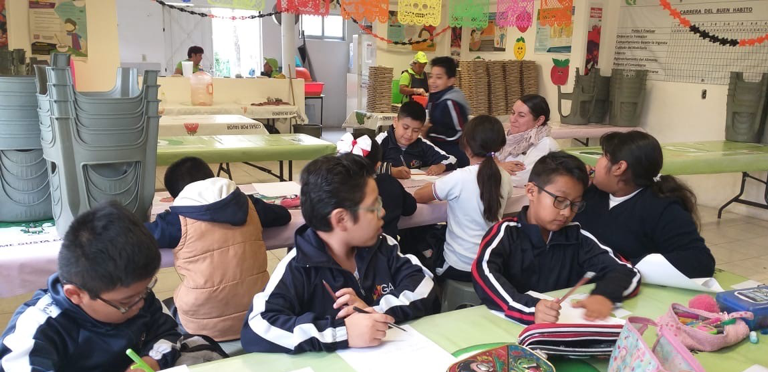
In semi-structured interviews, we asked about people’s experiences. The questions dealt with areas we could call socio-linguistic and the prompts for the questions were developed by the Seminary for Linguistics and Education (semle), which seeks to promote interculturality, the use of the mother tongue by indigenous children (bilingualism) and the use of written language by all children. The project was carried out by small interdisciplinary groups in Mexico City, Querétaro, Guadalajara and Puebla.
Every situation was different. One can’t lump all indigenous children and their parents into one way of relating to a native tongue. In some cases, children spoke an indigenous language and their parents only spoke that language. In other cases, parents spoke both an indigenous language and Spanish—bilingual with differing levels of fluency. Sometimes the mother spoke both languages and the father only the indigenous language, or it could be the other way around. Sometimes children are what you call “passive speakers” of one of the two languages—that is, they understand from hearing the language at home, but can’t really communicate with it.
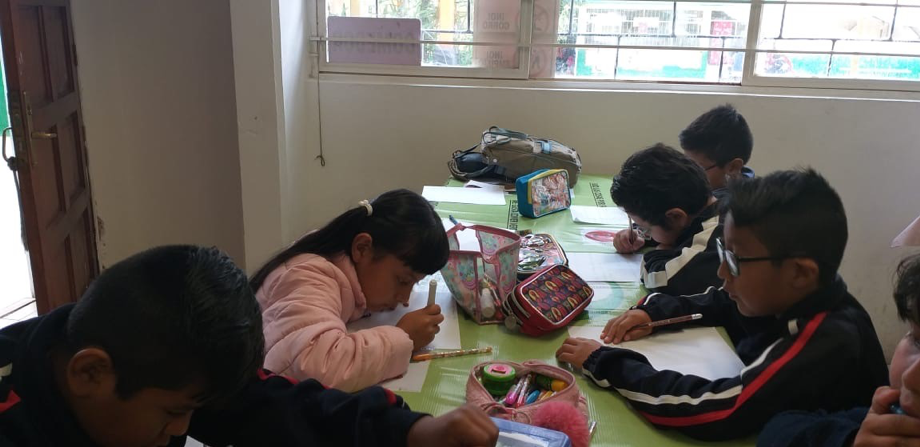
And each type of bilingualism carries with it a variety of attitudes, ranging from linguistic pride to denying the mother tongue. The variety of combinations is almost infinite and shows just how complicated it may be to determine how aware the student is of their own bilingualism and for the school itself to figure out what type of speakers are enrolled. Children can be asked the following questions to get some idea of the bilingual context: “In this school, are there children who speak a language other than your own?” “Do you know what that language is called?” “Who of your classmates speaks these languages?” “Do you like to play with them?” “Do they teach you English here?” As a rule, children do not seem aware of the linguistic diversity in their classroom or school (or do not want to reveal their awareness). They give answers like “I don’t know” or “There aren’t any kids here who speak other languages” or “I don’t remember.”
In contrast to what happens at school, the majority of these children say that at home or in the town their family comes from, their parents and grandparents speak different languages: “I don’t understand it, but I speak it with my granny,” “My mother has taught me a few words,” “My father speaks another language with my uncles and his friends.” “My dad didn’t teach me to speak his language.” The children make a notable distinction between what is spoken at home and at school; school is a place for Spanish. Lately, English has become a requirement, which adds another layer of bilingualism. In the face of this contradiction of knowing and not knowing about indigenous languages, English gathers steam and children are consistent with their answers in two ways. It’s natural to speak of English as the language that is taught at school and to exhibit their knowledge with a sense of pride: “I know how to say ‘good morning’.” or “I know how to say ‘May I go to the bathroom’” The other way of speaking English is even more striking, because it gives an inkling of how this language is interpreted: “My mommy speaks English” or “My grandfather speaks English” and “My cousin knows English very well.” The language they avoid naming becomes transformed into English—another non-Spanish language—that they refer to as a sign of prestige and pride.
The knowledge of the parents about the school’s linguistic makeup is not very different, although the need for covering up is less perceptible. Parents seem to avoid specific answers to the questions, “In this school, do children speak other languages?” “Do you know the names of those languages?” and they give answers like “No, I hadn’t noticed” or “I didn’t know” and sometimes, “Oh, I think there’s one called Triqui” or “They say there are Mazatecos.” But when asked what language their children are taught at school, they answer quickly and fearlessly, “Spanish, but also English,” “English” or “Spanish, and now English.” And to the question, “Would you prefer your children to learn your indigenous tongue or English,” the answer is loud and clear, “Better to learn English.” “I don’t want them to learn Triqui; English means more chance for advancement.”
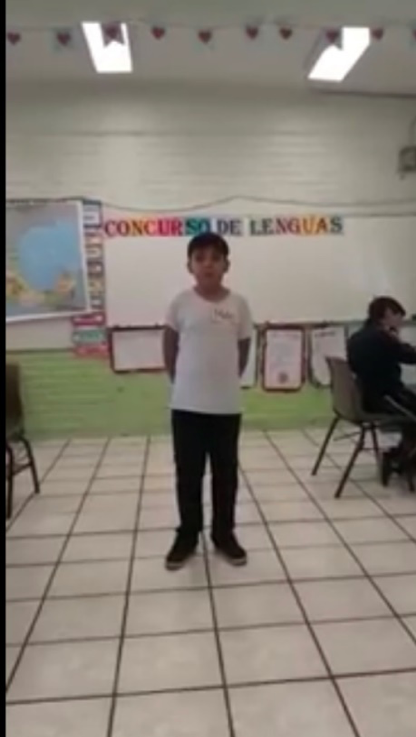
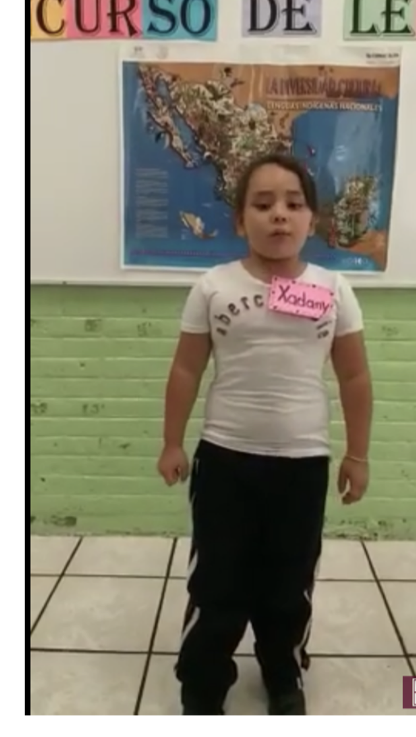
Strikingly, teachers give similar answers. To the questions “In this school, do children speak other languages?” “Do you know the names of those languages?” they reply “No, here there aren’t any” or “Just a few parents, but hardly anyone speaks dialect any more” or “Not in my classroom, I don’t have any kids like that” or “I’ve heard some children speak Triqui and Náhuatl, but I’m not sure.” It’s unclear whether the teachers are simply unaware or are fearful about broaching the subject of indigenous languages. Although the teachers deny the presence of these children, they seem to deal in sterotypes in identifying speakers of indigenous languages: “They are poor and badly dressed,” “They do not perform well at school,” and in general, according to the teacher interviews, the only value of an indigenous language is that it is a link to the past and the “roots of our people.”
Some Final Thoughts
The situations I’ve recounted here, to a lesser or greater extent, are representative of the majority of urban schools with an indigenous population, revealing a predominant lack of compliance with current linguistic policy. The equation between bilingualism and interculturality is flimsy and deceptive. Its terms are trapped in a promising discourse without any concrete actions. Ignorance and an ambiguity of attitudes only manage to encourage a transitional bilingualism in which indigenous languages are displaced in favor of Spanish and, increasingly, English. The children’s native tongues will survive only with their open use in the school community. Teachers play a crucial role. They must leave behind their resistance and assume bilingualism with all its intrinsic complexity.
Fall/Winter 2019-2020, Volume XIX, Number 2
Rebeca Barriga Villanueva, Research Professor at the Center for Linguistic and Literary Studies of El Colegio de México (since 1985). Her lines of research are acquisition and development of children’s language in school years, language policies in Mexico, linguistics and education. Her book De Babel a Pentecostes was published recently.
Related Articles
Ghosts of Sheridan Circle
Targeted killing of political enemies—assassinations—is thankfully rare in the United States. The most famous such assassination occurred in Washington, DC. And it was committed by a close ally of the United States. In September 1976, Chile’s Pinochet dictatorship…
Bilingualism: Editor’s Letter
It was snowing heavily in New York. It didn’t matter much to me. I was in sunny Santo Domingo with my New York Dominican neighbors on the Christmas break from school. I learned Spanish from them and also at the local bodega, where the shop owner insisted I ask…
Two Wixaritari Communities
English + Español
I first arrived in the wixárika (huichol) zone north of Jalisco, Mexico, in 1998. The communities didn’t have electricity then, and it was really hard to get there because the roads were simply…


